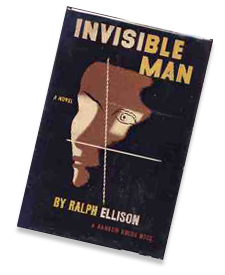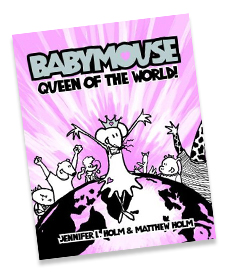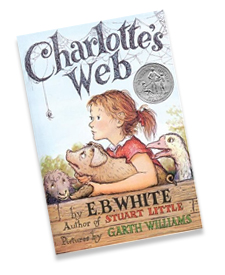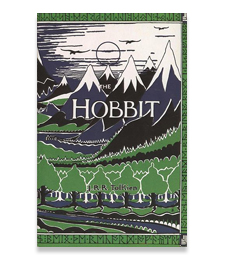Tips on Choosing Books Kids Will Want to Read
August can sometimes be the worst of all possible worlds. The sweltering heat forces children indoors, where they can soon bore of thrice-played video games and the social minefield of Facebook. In an ideal world, a stack of intelligent, exciting books would solve the problem, but finding the right reading material can be difficult. Combing through the ever-expanding young adult section of the bookstore can be a daunting task, and it’s easy to empathize with parents who give up and just grab the nearest copy of The Vampire Clique Diaries 3: Pretty Little Biters.
But choosing reading material for summer—or any other season—does not have to be so trying. There are several ways parents can figure out their child’s taste in books and choose works that will both suit these preferences and encourage further reading.
What to Read
What books do you recommend for kids?
Our recommendations are but a small sample of what’s available on bookstore and library shelves as excellent reads for kids of all ages. E-mail us at torch@tennessee.edu or post a comment below with your picks that children can enjoy this summer or any season, and your recommendations may appear in next month’s edition of eTorch.
The reasons to encourage children to read over the summer are numerous and largely obvious. Children who read during the months off from school have higher reading scores and return to school better prepared than children who do not, according to ongoing research conducted by Richard Allington, professor of reading education at UT Knoxville. In addition, children who do not read at all over the summer can experience a “summer slide” in which they forget some of what they learned during the previous school year.
The good news is that “summer reading” does not mean forcing your 13-year-old to plod through Moby-Dick. What constitutes good reading material is subjective. A Thomas Hardy novel that grows dusty on the nightstand does not help improve a child’s reading comprehension or enthusiasm.
“I don’t worry very much about which books are ‘good’ books,” Allington says. “Too many of the books that schools and librarians recommend are preferred by adults but not so much by kids. ‘Good’ books are ones that kids find easy to read. No one, including graduate students at UT—or anywhere else—likes hard reading.”
A “good” book is one that engages and interests the child. Figuring out what sorts of genres, characters, or settings are appealing to a child is the first step to being able to choose a good book, but it’s also a difficult one. Francie Alexander, senior vice president and chief academic officer of Scholastic Inc., has a few suggestions for things parents can keep in mind when thinking about reading material for their child.
 “Tweens are especially interested in books about relationships, and a lot of books are really about how kids get along with each other, or don’t get along with each other,” Alexander notes. Children reading about characters going through the same struggles they are—physical changes, fights with friends, family issues—shows them that they are not alone in having these problems, which can be reassuring.
“Tweens are especially interested in books about relationships, and a lot of books are really about how kids get along with each other, or don’t get along with each other,” Alexander notes. Children reading about characters going through the same struggles they are—physical changes, fights with friends, family issues—shows them that they are not alone in having these problems, which can be reassuring.
Compelling characters are also important to a book’s appeal, Alexander adds. Series are a good way to keep kids reading because the characters can be given more complexity, and children become more interested in and attached to them as the books progress.
Reading about worlds other than their own is also something that many children enjoy. Harry Potter has made the fantasy genre nearly ubiquitous, but historical fiction has also proven to be a hit with young readers.
For children with less enthusiasm for reading, Alexander recommends short stories, audiobooks, and books centered around another interest a child has, such as sports or music. Another option is the graphic novel, which has long since outgrown the “comics” label to become a fully realized genre.

“I think graphic novels help reluctant readers to feel confident. They’re a nice bridge between picture books and chapter books,” says Jennifer Holm, a New York Times-bestselling children’s author and co-author (with her brother Matt Holm) of the graphic novel series Babymouse. The Babymouse series is recommended for reluctant and beginning readers, but it also aims to appeal to girls, a growing segment of the graphic novel readership.
“I grew up in a household with boys, and there were always a lot of comics,” Jennifer Holm says. “So I read them and was always slightly disappointed with the female characters; let’s just say that I had a hard time identifying with Wonder Woman. That’s what led my brother Matt and I to create Babymouse.”
Children’s author and high school teacher Melissa Glenn Haber notes that, regardless of content, parents should let children read at their own pace and level.
“Children’s books aren’t training books; they’re real books, and some of them have more important things to say—and say them better—than books for older kids,” she explains. “Also, don’t despair if your kids read the same book over and over and over again instead of moving on to something new. It’s developmentally appropriate and is only increasing their facility in reading, which will make it easier for them to read other books.”
And if parents are still looking for guidance when they arrive at the local bookstore or library, they should feel free to ask a staff member for help.
 “As a child I relied heavily on my librarian, and I advise parents to do the same when looking for books for their independent readers,” Haber says. “Not every kid will like the same book, but a great librarian can ask your kid what books they do like and find a good match.”
“As a child I relied heavily on my librarian, and I advise parents to do the same when looking for books for their independent readers,” Haber says. “Not every kid will like the same book, but a great librarian can ask your kid what books they do like and find a good match.”
“Every bookstore and library can provide recommendations on what have been deemed ‘good’ books and what is actually selling,” Allington says. “I’d tend to go with the latter criteria for my choices.”
And How to Read It
Some children like to read independently, but many enjoy sharing their books with parents or family members, and participating in your child’s reading experience can be a crucial part of developing good literary habits.
“One way to get to be young again yourself is to read the book with your child,” Alexander says. “One tip for families is to take turns: ‘I’m going to choose something for us, and then you can choose something for us.’ ” For younger readers, parents can participate more directly through the age-old ritual of bedtime reading.
 Families and friends can help encourage each other by sharing recommendations. For example, a family can list some great books they read over the year on their holiday card. Social networking also makes sharing easy. Parents and kids can recommend and review books for their friends to see through sites like Goodreads, Scholastic’s The Stacks, and Facebook’s Visual Bookshelf.
Families and friends can help encourage each other by sharing recommendations. For example, a family can list some great books they read over the year on their holiday card. Social networking also makes sharing easy. Parents and kids can recommend and review books for their friends to see through sites like Goodreads, Scholastic’s The Stacks, and Facebook’s Visual Bookshelf.
Finally, the most common instruction for parents hoping to foster good reading habits is to lead by example by visibly reading books of their own.
“Parents should be reading themselves while their children read,” Allington says. “If the parents are not reading, why should the kids? Often the problem is the parents who have never demonstrated ‘getting lost in a book.’ If the parents don’t have a home library, why would you expect kids to have one or to be readers?”
Kids’ Summer Reading Shopping List
When it comes to children’s literature, quality and fun do not have to be mutually exclusive. Below are a few books that have pulled off the rare feat of pleasing critics and kids.
Ages 9-12
The Mostly True Adventures of Homer P. Figg by Rodman Philbrick
Written in the style of Mark Twain, this Civil War-era story follows 12-year-old Homer Figg as he journeys to find his brother, who has been illegally sold to the Union army.
Dear Anjali by Melissa Glenn Haber
When 12-year-old Meredith Beals’ friend Anjali Sen dies, Meredith decides to keep in contact with her by writing letters—in class, in detention, or on her dad’s old typewriter—describing her days in class, her long-term crush Noah, and the everyday drama that comes with being in middle school.
When You Reach Me by Rebecca Stead
After sixth-grader Miranda’s best friend Sal parts ways with her, Miranda starts receiving mysterious notes that accurately predict the future. Part mystery, part historical fiction (1979 New York City, of which only traces remain today), this novel captures the interior monologue and observations of children who are starting to understand the complexities of friendship, family, class, and identity.
Penny from Heaven by Jennifer Holm
It’s 1953, and Penny Falucci is living with her widowed mother and grandparents in New Jersey. Although she enjoys spending time with her father’s large Italian-American family, there is tension between them and her mother that sprung up in the wake of her father’s death. After an accident lands Penny in the hospital, she learns the truth behind the family’s feud.
Bad News for Outlaws: The Remarkable Life of Bass Reeves, Deputy U.S. Marshal by Vaunda Micheaux Nelson
Bass Reeves was the first African-American deputy U.S. marshal and the most successful in American history. Outlaws of the Wild West feared his intelligence, courage, and excellent marksmanship, all of which helped him bring more than 3,000 criminals to justice with fewer than 14 deaths in the line of duty.
Ages 12-14
The Absolutely True Diary of a Part-Time Indian by Sherman Alexie
Alexie, a Spokane/Coeur d’Alene Indian known for his fiction and poetry for adults, has crafted a young adult tale that pulls off the rare feat of being heartbreaking and laugh-out-loud funny at the same time. Native American Junior, a budding cartoonist who bears a remarkable similarity to Alexie himself, must come to terms with life both on and off the reservation.
The Pull of the Ocean by Jean-Claude Mourlevat
Yann, a mute 10-year-old boy who is the size of a toddler, is the center of this modern retelling of the classic fairly tale “Tom Thumb.” After overhearing a troubling conversation between his parents, Yann leads his six brothers on a trek toward the ocean, a journey that teaches them how to protect themselves and each other.
Mare’s War by Tanita S. Davis
Teens Octavia and Tali are not looking forward to traveling cross-country with their tough, opinionated, sports car-driving grandma, who breaks all of the matronly stereotypes. But as they learn more about their grandmother’s life—particularly her time in the African-American regiment of the Women’s Army Corps during World War II—they begin to understand her experiences, learning more about themselves in the bargain.
Ages 14 and up
How to Build a House by Dana Reinhardt
Seventeen-year-old Harper Evans has left her home in Los Angeles to spend the summer rebuilding a home in Tennessee with Homes from the Heart, a teen volunteer organization. Her self-confidence in fixing houses soon leads to her increased awareness of how she can rebuild some of her chaotic life.
Magicians by Lev Grossman
Quentin Coldwater is a nerdy high school senior from Brooklyn who must confront his childhood fantasies—as well as some difficult adult realities—when he attends an exclusive magic college in upstate New York. But Coldwater is more than Harry Potter “through a glass, darkly.” His struggles—with friends, love, and boredom—are those of a thoroughly modern teenager.
The Hunger Games by Suzanne Collins
Weakened by drought, famine, violence, and myriad other natural and manmade disasters, the United States has collapsed and been replaced by a nation that requires each of its districts to send children as tribute to participate in the Hunger Games, a televised event in which the participants fight to the death to eliminate their competitors.
Paper Towns by John Green
When Quentin Jacobsen’s unrequited love Margo breezes back into his life a few weeks before they graduate from their Orlando-area high school, they decide to go on a late-night score-settling spree. But then Margo disappears again, and Quentin goes on a mission to find out what happened to her.
Recommended classics for kids
There are plenty of classic books that still keep kids flipping the pages for hours. Below are some old standbys that won’t make your child’s eyes glaze over:
Ages 9-12
Charlotte’s Web, E.B. White
Little Women, Louisa May Alcott
A Wrinkle in Time, Madeleine L’Engle
Roll of Thunder, Hear My Cry, Mildred D. Taylor
Chronicles of Narnia series, C.S. Lewis
Chronicles of Prydain series, Lloyd Alexander
Ages 12-14
To Kill a Mockingbird, Harper Lee
The Hobbit, J.R.R. Tolkien
The Adventures of Huckleberry Finn, Mark Twain
20,000 Leagues Under the Sea, Jules Verne
The Call of the Wild, Jack London
The Giver, Lois Lowry
Ages 14 and up
The Catcher in the Rye, J.D. Salinger
Invisible Man, Ralph Ellison
The Maltese Falcon, Dashiell Hammett
The Color Purple, Alice Walker
The Red Badge of Courage, Stephen Crane
Of Mice and Men, John Steinbeck
The Outsiders, S.E. Hinton
—story and research by Meredith McGroarty and Ariel Cowen (’10)


1 comment
Dear Meredith,
Jay forwarded this to me because I like children’s books. Of the new ones, I’ve only read The Absolutely True Diary of a Part-Time Indian and The Magician. I really enjoyed the first, and had mixed feelings about the latter. It really depends on your knowning classical children’s fantasy, most obviously the Narnia books, but it’s also quite dark. I vaguely remember finding the ending disappointing.
Anyhow, you’ve given me lots of reading to look for and to look forward to.
Best, Maura
Comments are closed.